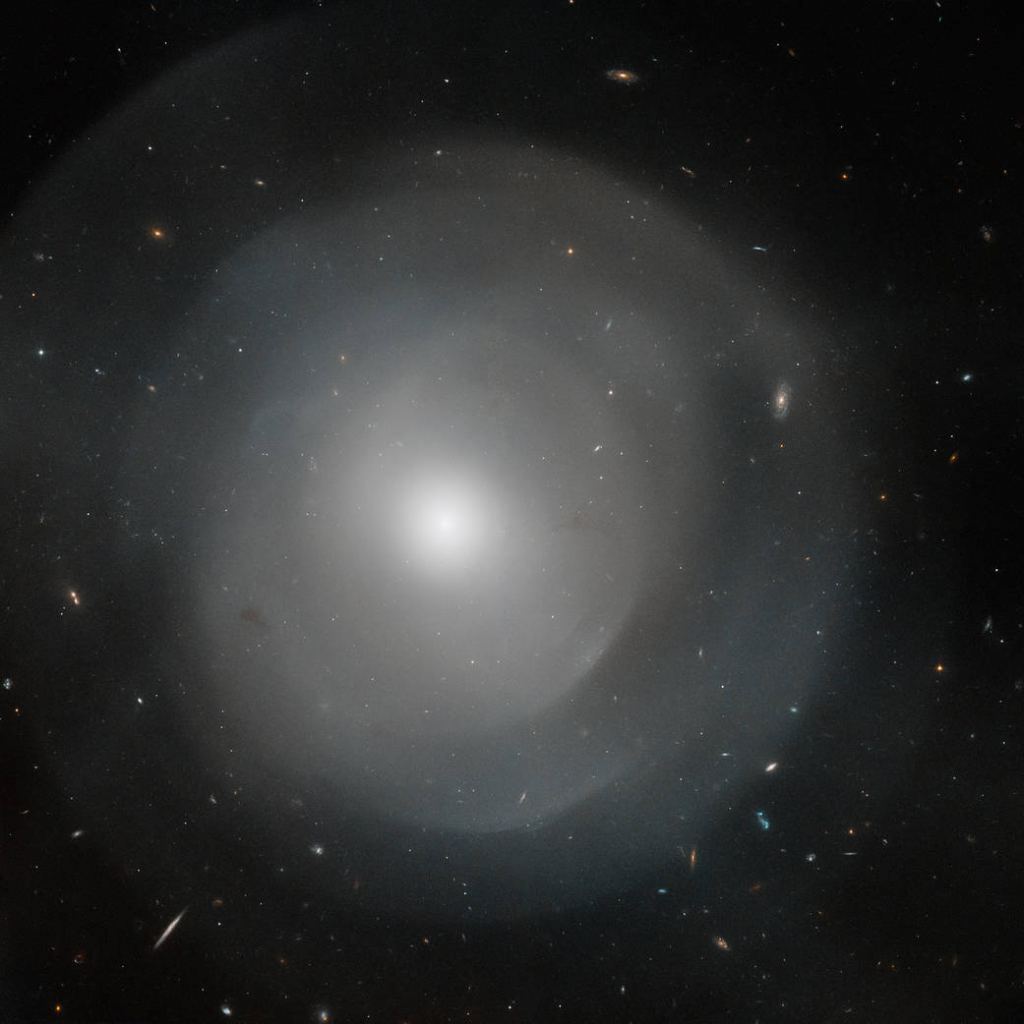
Take a good look at the latest image provided by the Hubble Space Telescope. It shows a huge elliptical galaxy called NGC 474 that lies about 100 million light-years away from us. At about two and a half times larger than our Milky Way Galaxy, it’s really a behemoth. Notice its strange structure—mostly featureless and nearly round, but with layered shells wrapped around the central core. Astronomers want to know what caused these shells. The answer might be in what this galaxy represents: a vision of the future Milky Way and the Andromeda Galaxy.
The Milky Way’s Fate: When Galaxies Collide!
Galaxies change over long timescales. More than thirteen billion years ago, the first ones were little shreds of matter. They coalesced to form larger and larger structures. That process of merging and cannibalization continues to this day. It influences the “look” of a galaxy and adds variety to its stellar populations. Our own Milky Way is part of that process. Currently, it’s cannibalizing the Sagittarius Dwarf Galaxy. It has also merged with or gobbled up between five and 11 smaller ones during its lifetime.
Astronomers already know the Milky Way will continue to be part of the galaxy merger process. About 4.5 to 5 billion years from now it will start to merge with the nearby Andromeda Galaxy (M31). Of course, M31 will have moved a lot closer to us in the intervening time. As an added bonus, the Triangulum Galaxy (M33) might also participate in this galactic dance. For those of you keeping track of these things, this will happen about when the Sun runs out of hydrogen in its core and begins evolving into a red giant. So, it’ll be an interesting time. Mark your calendars.
NGC 474 Foretells the Milky Way’s Future

NGC 474 looks a lot like what astronomers think the Milky Way and Andromeda will resemble after their merger. They won’t be two beautiful spirals anymore. Instead, their gravitational interaction will produce an almost featureless elliptical galaxy. How will that happen? As the two galaxies approach each other, the strong gravity of each one will distort their shapes. Giant streamers of gas and dust will get pulled out of each galaxy. There might even be central shells of material, just like in NGC 474.
In addition to all that activity, there’s one other hallmark of a merger: starburst knots. They are sites of star formation that occur in the wake of a merger. The activity pushes clouds of gas and dust together, eventually creating scads of hot, young stars. That’ll happen as long as there’s enough material available to the starbirth nurseries.
Eventually, the burst of starbirth will slow down and stop. The resulting new galaxy will assume a fairly boring-looking elliptical shape. That, in a nutshell, is what happened to NGC 474. And, it’s the fate of Milkdromeda: a (probably) featureless elliptical that once was two beautiful spiral galaxies.
Explaining those Shells in NGC 474

In the case of NGC 474, astronomers have a few theories about why it has these odd shells. One idea is that it interacted with another galaxy billions of years ago. That created the shells in a process similar to throwing a rock into a pond and watching as the ripples move away from it. NGC 474 is not alone in having collision-caused shells. About ten percent of all ellipticals have these features. That might be a clue to their formation and merger histories that astronomers will investigate.
There’s another interesting thing about these shelled galaxies. While most ellipticals are in clusters, these oddballs occupy relatively empty stretches of space. It’s possible they might have cannibalized nearby galaxies and thus cleared out their neighborhoods of any galactic competition.
Other Theories about NGC 474
It’s also possible that NGC 474 is stripping gas away from a nearby one called NGC 470. Another idea is that the shells might be caused by a collision with a very gas-rich galaxy. Not only did they meet once, but they had a second collision that led to their final merger. The shells are the evidence of that long-merged galaxy. Hubble’s view gives a more detailed look at that central region and those mysterious shells.
For More Information
Hubble Peers Through Giant Elliptical’s Layers
It’s Inevitable: Milky Way, Andromeda Galaxy Heading for Collision

This is a rhetorical question. Milkomedia will end up as an elliptical galaxy of some sort. Hopefully the human race will still be around to ponder what this means a few billion years from now.